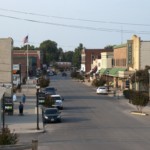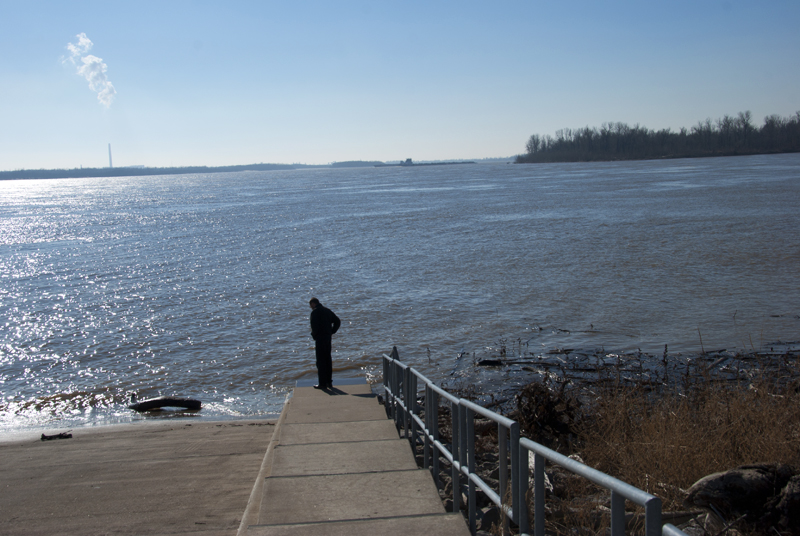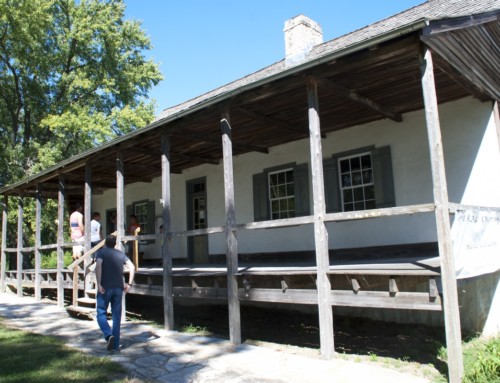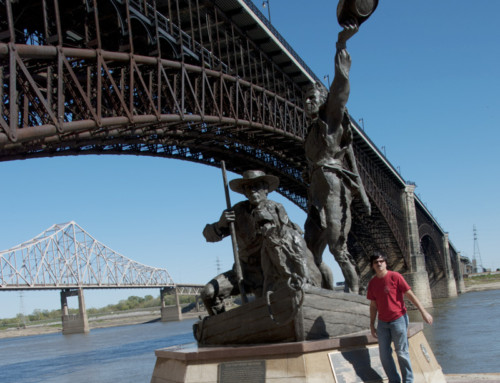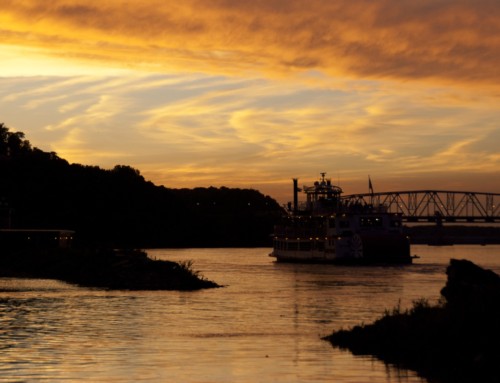Introduction
New Madrid (pronounced MAD-rid) is best known for being at the epicenter of a powerful series of earthquakes, but it is also an old community along the Middle Mississippi that traces its roots back to the Spanish colonial days. Take some time to get to know this storied river town.
Visitor Information
Got a question? Contact the New Madrid tourism office or the New Madrid Chamber of Commerce (573.748.5300) for some help.
History
Early French visitors apparently named the area l’anse a la graisse (something like “greasy bend”), reputedly because of the preponderance of bear and bison meat they ate while here. That name didn’t stick, though.
Colonel George Morgan founded New Madrid in 1789 at the middle of a dramatic loop made by the Mississippi called the New Madrid Bend (or the Kentucky Bend, if you’re on the other bank). The village was founded when the territory was under Spanish rule. US General James Wilkinson, a rival of Morgan who was secretly collaborating with Spain, eventually sabotaged Morgan’s efforts, and the few dozen people who tried to create a new village moved on.
The governor of Spanish Louisiana, Estavan Miró, then directed soldiers to the area to build a fort and began encouraging new settlers. Slowly, folks started moving in again; New Madrid counted six hundred residents within a few years. It was a unique place, a French cultural outpost in Spanish territory populated by a significant number of Americans and American Indians.
The site turned out to be less hospitable than early residents expected, though. Disease was common (malaria, probably), and the Mississippi kept eating away at the bank where the town was first built. In just fifteen years, the river carved away the site of three forts and three city streets.
From late 1811 to early 1812, New Madrid was at the center of hundreds of earthquakes that shook and reshaped the region. The three biggest quakes took place on December 16, January 23, and February 7, scaring the hell out of the people who lived there. The shockwaves raced throughout the central and eastern US, with rumblings felt as far away as Washington DC and Natchez, Mississippi.
The first quake destroyed much of the town, forcing survivors to live in tents and other hastily constructed structures. Subsequent quakes convinced many people to leave altogether. It took a long time for the village to bounce back. In 1820, John James Audubon passed through; he wrote:
This almost deserted Village is one of the poorest that is seen on this River bearing a name.
During the Civil War, the critical Battle of Island Ten took place in the Mississippi near today’s New Madrid. (The river eventually swallowed up the island.) New Madrid had just a few hundred residents as the Civil War ended but has grown steadily every decade since. It has been a largely agricultural community since the Civil War, with cotton plantations carved out of the floodplain forests. Many of those fields are now planted with soybeans and corn.
Exploring the Area
The New Madrid Historical Museum (1 Main St.; 573.748.5944) has several informative exhibits about the 19th century earthquakes, plus displays on the Civil War.
The Higgerson School Historic Site (307 Main St.; 573.748.5716) offers a peek inside an old one-room school.
The Civil War-era Hunter-Dawson State Historic Site (312 Dawson Rd.; 573.748.5340) is a handsome mansion built by William and Amanda Hunter, wealthy merchants and slave owners. William died of yellow fever before the house was completed, and the family managed to hold on to the property during and after the Civil War. The home still has many original furnishings, a rarity for homes of that era and reason enough to take a tour.
Parks Along the River
There’s a paved walking trail along the riverfront that comes with great views of the dramatic bend in the river.
Arts & Culture
The River Walk Gallery (711 Waters St.; 573.748.4060) showcases the works of local and regional photographers and painters in the oldest extant house in New Madrid.
Sports & Recreation
Big Oak Tree State Park (13640 S. Highway 102; 573.649.3149) preserves a relic of the floodplain forest that once dominated this part of the Mississippi Valley. There’s a boardwalk trail through a dense hardwood forest that contains some of the oldest and tallest oak trees in the state, and another section dominated by bald cypress trees. You can drive to the park in forty minutes from New Madrid.
**Looking for more places to visit along the Mississippi River? Check out Road Tripping Along the Great River Road, Vol. 1. Click the link above for more. Disclosure: This website may be compensated for linking to other sites or for sales of products we link to.
Where to Go Next
Heading upriver? Check out Dorena.
Heading downriver? Check out Hayti.
Community-supported writing
If you like the content at the Mississippi Valley Traveler, please consider showing your support by making a one-time contribution or by subscribing through Patreon. Book sales don’t fully cover my costs, and I don’t have deep corporate pockets bankrolling my work. I’m a freelance writer bringing you stories about life along the Mississippi River. I need your help to keep this going. Every dollar you contribute makes it possible for me to continue sharing stories about America’s Greatest River!
New Madrid Photographs
A Song for New Madrid
New Madrid from Anodyne by Uncle Tupelo (1993)
©Dean Klinkenberg, 2022,2018
